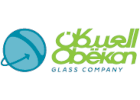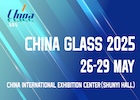As North America’s largest glass manufacturer, whose products are the most specified brand of commercial glass in the industry, Vitro Architectural Glass (formerly PPG Glass) recognizes the vital role its low emissivity (low-e) glass plays in contemporary architecture and building construction, particularly the growing trend of biophilic design.
Biophilic design is an approach that incorporates elements of nature and natural environments into built environments. The growing practice of biophilic design in architecture is about maintaining a connection to nature and light through a building. Such steps include increasing daylighting, incorporating indoor plants and water, and providing natural views. Glass is the most popular transparent building material used in contemporary architecture and construction, making it an optimal choice for biophilic design.
“Occupant health and wellness continues to be a top priority for architects, and we’ve seen a growing number of biophilic strategies being incorporated into retrofits and new designs,” said Annissa Flickinger, Manager, Architectural Market Development East Region, Vitro Architectural Glass. “Vitro’s industry-leading low-e solutions are an ideal choice for biophilic design because they enable optimal daylighting, energy efficiency, and thermal insulation performance, which complement the philosophy behind biophilic design and support the inclusion of views of nature.”
Glass is also an ideal effective material for making interior spaces private without closing off views to exteriors and each other, allowing for separate spaces that are engaging yet hygienic in a pandemic-era world.
With more businesses and organizations requiring workers to return to the office, biophilic design will play a significant role in designing future workplaces to help attract workers and support worker satisfaction and overall performance.



























